By using our website, you agree to the use of cookies as described in our Cookie Policy
The Noble Fish: Forty Years of Fresh Copper River Salmon
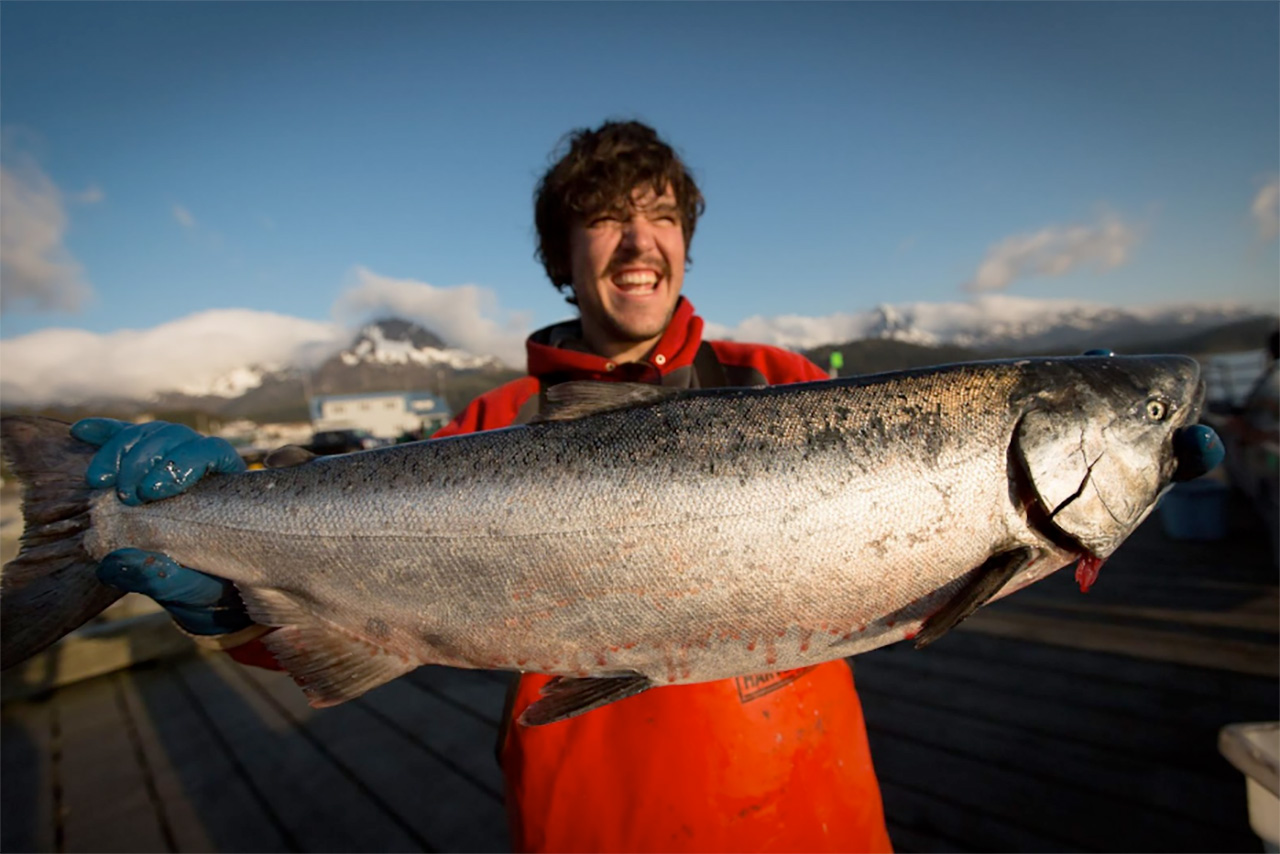 The Noble Fish: Copper River King Salmon
The Noble Fish: Copper River King Salmon
The 2023 Copper River Salmon season marks a momentous year as it is the 40th anniversary of a pivotal shift for this fishery. 1983 was when our ultra-rich and genetically unique Copper River King salmon made the leap into a new realm.
Although all species of Copper River salmon - king, sockeye, and coho - are well known in retail markets around the country now, back then it took risk, instinct, and grassroots effort to bring this wild salmon from net to table, fast and fresh. American culinary trends were shifting and the fishermen, restaurants, and consumers, thankfully, were listening.
In our remote Alaska fishing town of Cordova situated at the mouth of the Copper River Delta, this history is born out of the instincts of a hardworking and committed fleet of fishermen and an American taste visionary, both of whom eventually shepherded this treasured American fish fresh onto dinner plates across the country.
In the decades prior and to this day, Copper River salmon was and still is harvested according to the strict guidelines established by the Alaska Board of Fisheries and the Alaska Department of Fish and Game. Prior to 1983 our ultra-rich Copper River king was either canned at local processors or a small amount was sent to foreign markets in frozen form.
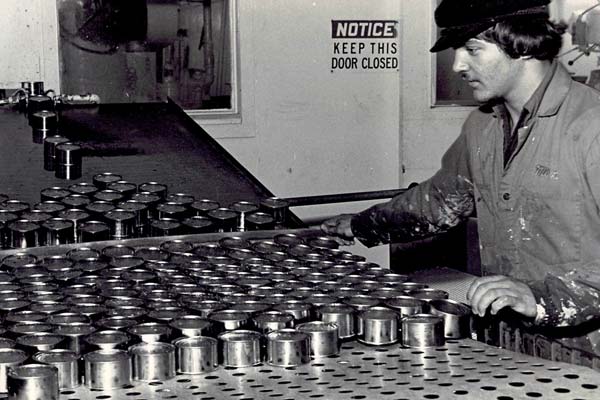 Inspecting canned salmon in Cordova, AK
Inspecting canned salmon in Cordova, AK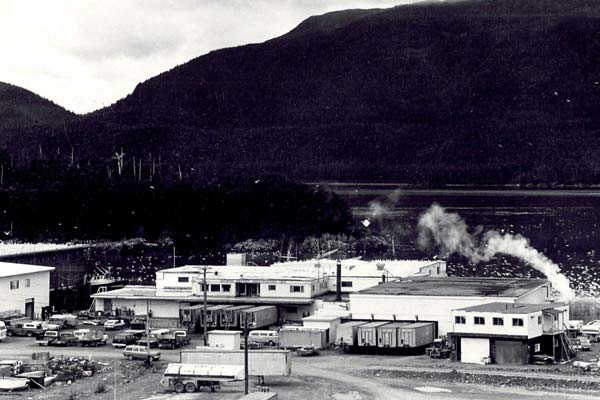 North Pacific Processors, salmon canning plant Cordova, AK
North Pacific Processors, salmon canning plant Cordova, AK

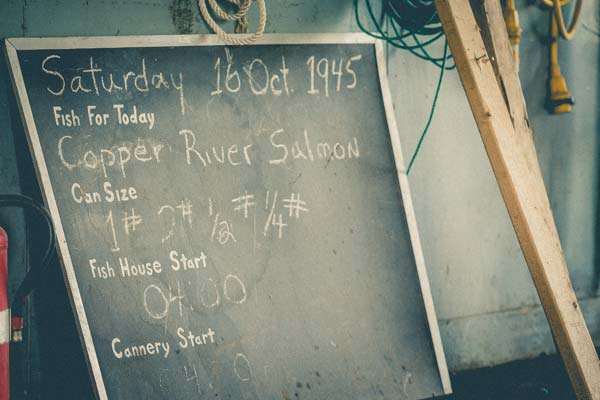 Cannery notes for the shift, circa 1945
Cannery notes for the shift, circa 1945Walking the Docks and Carting a Can of Salmon
In the early 1980s one outgoing Copper River fisherman, Tom Johnson, decided to test the waters so to speak and started to single handedly direct market the fish to chefs and restaurants in the Lower 48. While traveling on the East Coast and in Hawaii, Tom, who was born and raised in Cordova, would talk to fellow fishermen on the docks and introduce himself to chefs and restaurateurs, perhaps sharing a can of Copper River salmon and the story of this wonderful and wild fish being harvested from his hometown. His outreach got noticed and he began shipping his fresh salmon to select clients in Hawaii, Oregon, California, and Washington.
About a year later, a fellow Copper River fisherman, Bill Webber Sr., introduced Tom to a Seattle seafood consultant, Jon Rowley. Rowley was revered in the culinary world during his career and of course is well known for spearheading Copper River salmon into the culinary limelight in Seattle and around the country. Back then, Rowley knew there was a truly unique fish at hand and set forth working closely with the fishermen guiding them on best practices for handling the fresh fish. It was no simple undertaking.
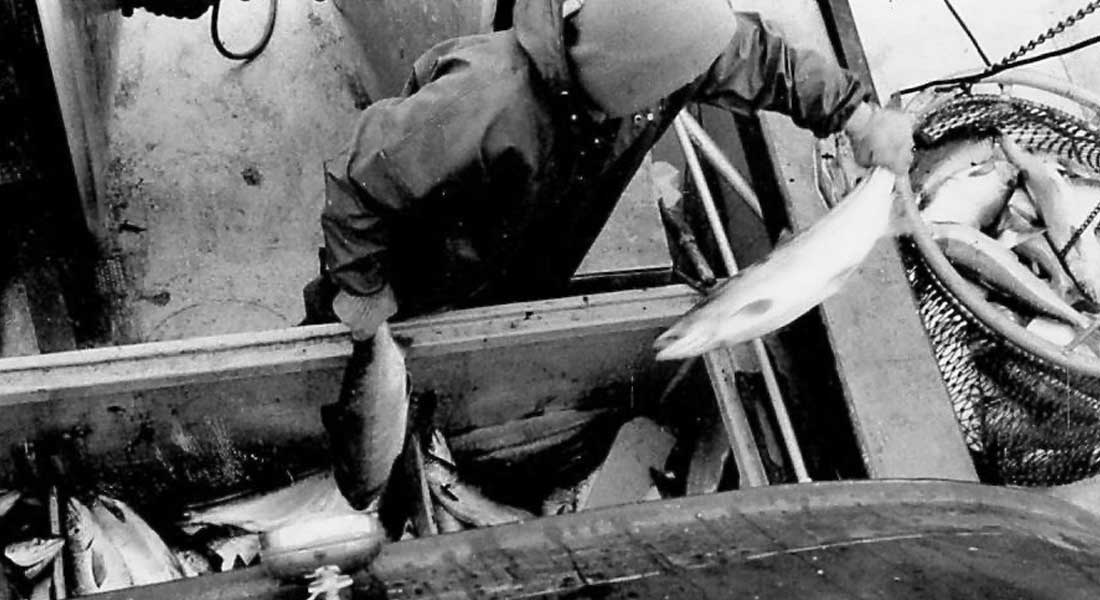
Fishermen learned new quality handling methods. Handling fish by the tail went by the wayside in order to preserve the integrity of the internal framework of the fish.
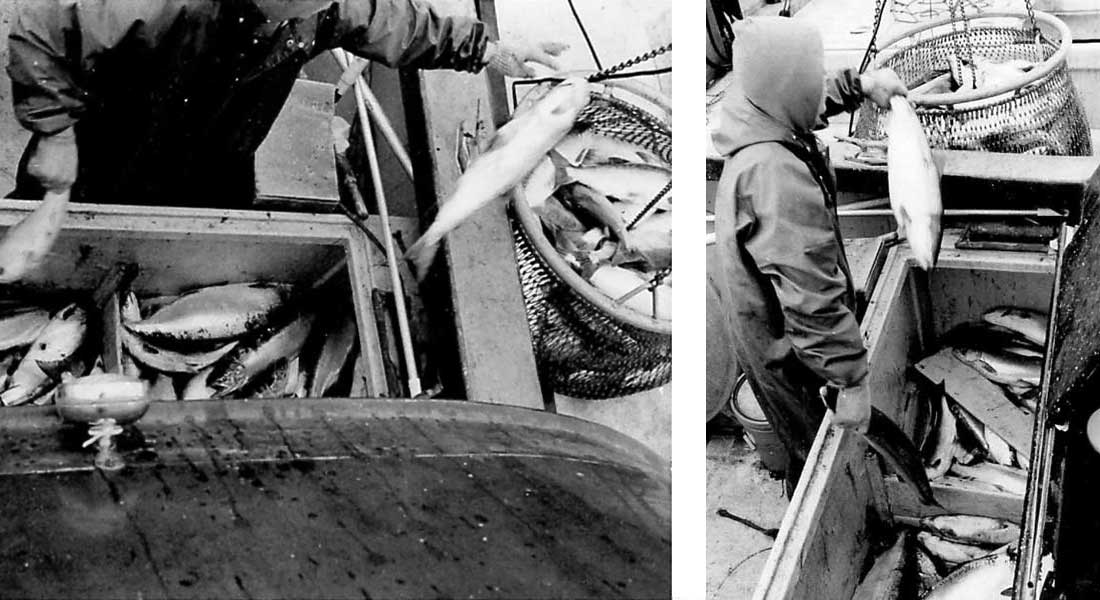
Fish holds were no longer dry but rather filled with flake ice to layer harvested salmon in to slow down the rate of degradation due to temperature abuse.
Reflections from the Fleet
The task of getting the Copper River Kings, which Rowley dubbed The Noble Fish, from net to fork quickly and of superior quality fell to a small group of fishermen who had to make the unprecedented shift away from status quo. At the time, the processing infrastructure in Cordova was set up for handling large quantities of fish for canning. The processing plants were not set up for handling the fish fresh and destined for some of the finest restaurants in the country.
Jerry McCune, who has been a Copper River fisherman for over 64 years and was the President of Cordova District Fishermen United for 34 years, explained: “Tom Johnson broke the barrier into the market, and we went through all the steps to make the change. Tom called a few of us together. We wondered how we could do this.” Making quality paramount, the fishermen had to adjust what they were doing and how much fish they were catching. McCune explained that they had to bleed, clean, and ice the fish on board to maintain that quality. The fishermen also had to secure air transport into and out of Cordova to get the fish delivered to Seattle and elsewhere in top quality fresh condition.
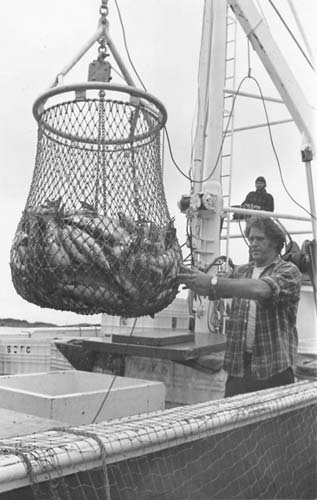
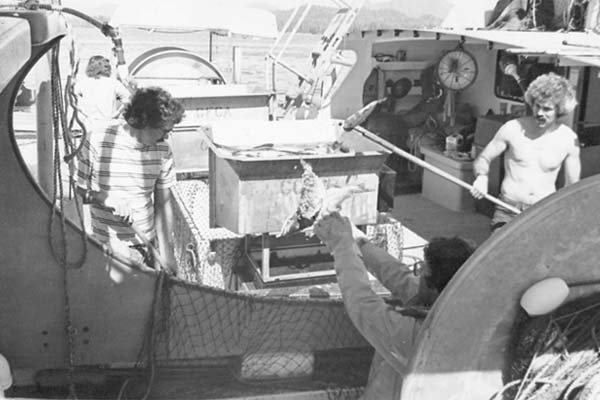
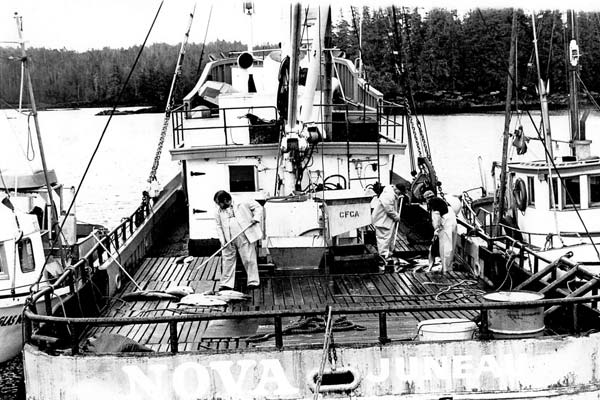
The use of pews to off load and handle fish fell out of favor in light of new modern quality handling standards.
While managing all this during long arduous openers dictated by ADFG, McCune explained that the fishermen also had to make the tough economic decision to catch fewer kings to implement those steps, bleed the fish properly, and maintain the fish’s integrity.
McCune explained, “The end result of this whole thing was that we broke the market and proved we could get fish out fresh and of high quality. Tom Johnson took the ball from Rowley and made it work with the fishermen out on the Copper River flats… The processors soon realized the domestic market was the way to go.”
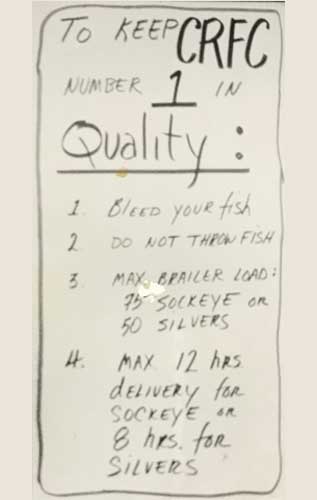 Fishermen made the tough decision to catch fewer fish to implement new quality standards.
Fishermen made the tough decision to catch fewer fish to implement new quality standards.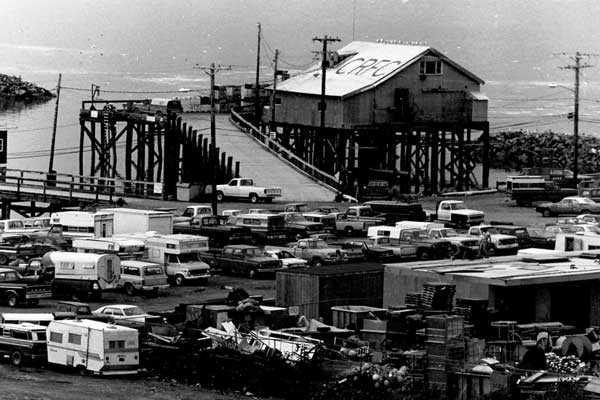
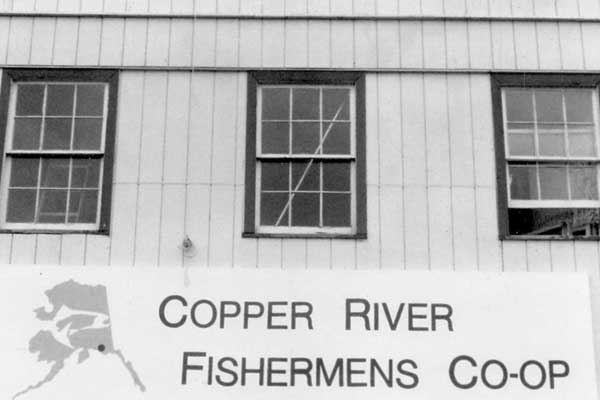 A small group of fishermen joined together to market their fish directly.
A small group of fishermen joined together to market their fish directly.On a parallel at that time, the Copper River Fishermen’s Co-op developed when a group of about 45 fishermen joined together to work cooperatively to market their fish directly. Demand for the Copper River salmon was increasing rapidly once the market was broken, these fishermen expanded the availability and marketability of this fish through 1991.
Chefs Take Notice
In short order, America’s chefs began to take notice. Ray’s Boathouse in Seattle, celebrating its 50th Anniversary in 2023, was one of the first restaurants to celebrate the Copper River Kings and they continue to do so each year. Wayne Ludvigsen who was the Executive Chef at Ray’s in 1983 recently recalled the delivery of the first order. Rowley had arranged for four 100-pound boxes of fresh Copper River King to be delivered to four select restaurants in Seattle—Ray’s Boathouse, McCormick & Schmick’s, Triples of Restaurants Unlimited, and Rosellini’s. Ludvigsen recalled, “My recollection is that I was anxiously waiting by the back door. It showed up around 6:30 and we opened for business at 5 pm at the time. It was on the feature sheet that night and the staff kept coming and asking where it was because everyone wanted it. We got four 25-pound fish and we called them suitcases because they were short and fat and had really thick bellies. When I fileted the fish and ran my finger along the fish after I removed the rib bones, there was oil on my fingers. It was rich and like the oil you find in an oil supplement. That orange persimmon color was there. Because the fish was so big, we block cut it and as I recall we served it with sorrel compound butter. It may have also been simply grilled. Butter is always good with it, but the fish by itself was just so good.”
 Quintessential spring menu offerings at Ray’s Boathouse featuring Copper River King Salmon.
Quintessential spring menu offerings at Ray’s Boathouse featuring Copper River King Salmon.
By 1985, Wolfgang Puck’s Spago in Los Angeles was ordering and Alf Collins in “Fresh Today” of the Seattle Times on May 29, 1985, reported:
“The quality fishermen of the Copper River in Alaska have been flying their premium, carefully handled red fleshed salmon here for a couple of years, but this year they have hit the big time with large newspaper ads from restaurants lucky enough to get a supply. We should enjoy it while we can, because Spago, the trendiest of Los Angeles restaurants, ordered a shipment last month and liked it well enough to reorder. If Copper River salmon hits big in L.A., we won't be seeing much of it.”
After all these years the fishery and fishermen have evolved but also stayed very much the same. The commitment to quality remains stalwart amongst our fleet and as time and technology have evolved over the last generation and a third, our fishermen have been innovative in how they market and share the Noble Fish with the world. Slush chill bags are now the standard method of chilling the fish onboard and these bags of course keep the salmon cold to preserve quality, but they also allow the fish to float which avoids bruising the fish and damaging the flesh of the fish. Advances in technology over the last generation allow our fleet to communicate directly with customers and clients via websites, instant messaging, social media, shipping and package efficiencies, and even live tracking updates which allow direct marketers and customers to follow their fish from dock to door!
Sustained for Forty Years and Counting
As we reflect on these pivotal decades for the Copper River king, sockeye, and coho fishery we also ponder the fleet today. With a nod of thanks to our pioneering fishermen of the 1980s, our fleet now consists of nearly 540 fishermen, some of whom have been fishing for fifty years and others who are relatively new to the fishery. The steadfast commitment to quality remains paramount and our fleet now has access to tools and technology that Tom Johnson, Jon Rowley, and the fleet could only have dreamed of in the 1980s. But as much as things have changed, they also remain very much the same. Copper River salmon remains a great fish in the right place at the right time, protected now and for future generations thanks to the State’s constitutional commitment to the sustainable yield method.
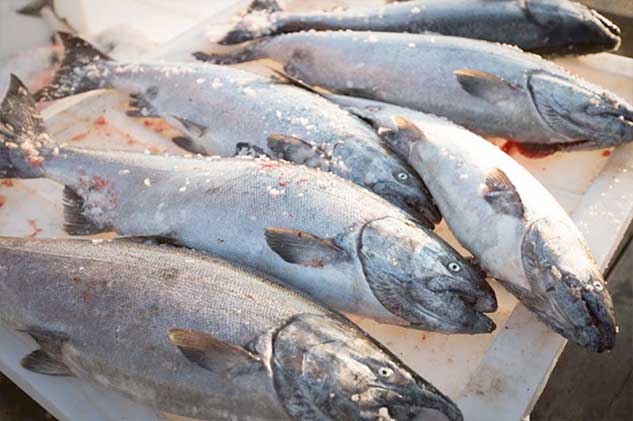 Fresh Copper River King Salmon destined for Chefs and restaurants in the Lower 48.
Fresh Copper River King Salmon destined for Chefs and restaurants in the Lower 48.Christa Hoover, Executive Director of the Copper River Prince William Sound Marketing Association says, “We are pleased that to this day, thanks to those efforts of culinary icons, our dedicated fleet of fishermen, and the Alaska Constitution’s steadfast commitment to sustainability, Copper River kings, as well as sockeyes and cohos, are indeed still great fish in the same place and at the right time. We are so grateful we can continue to share this special wild salmon, and its story now and for future generations. And we are grateful we can still bring the ‘Noble Fish’ to kitchen tables across America.”
Researched and written by Melissa A. Trainer


